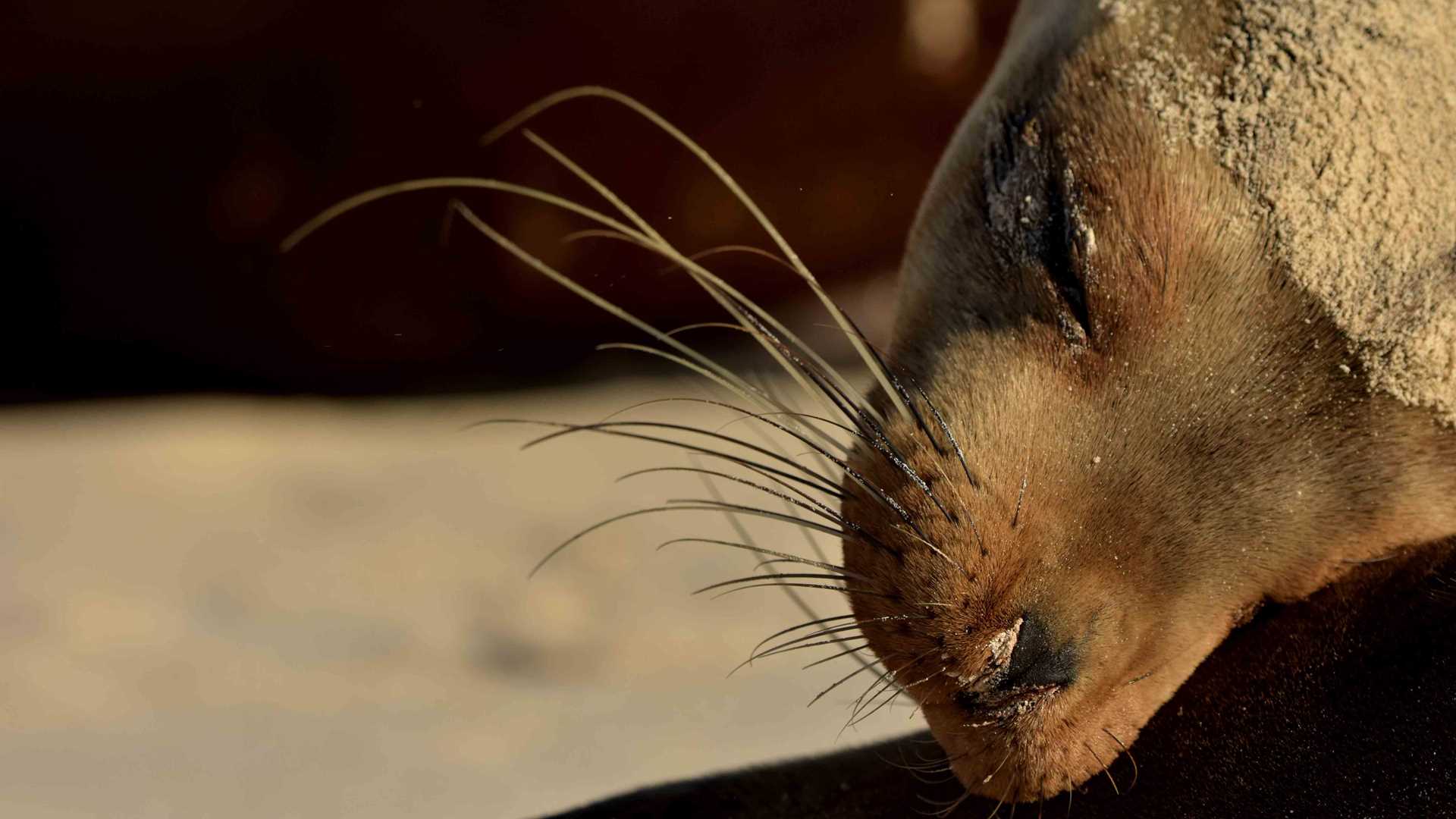San Cristobal Island, the oldest of the 17 major islands that form the Galapagos, lies east in the archipelago. Here we find some of the oldest rocks, some of which date back 5 million years. The north-eastern tip of the island is crowned by tall and steep cliffs, remnants of some huge tuff cones weathered by the strong winds that blow constantly over this area. This spot is called Punta Pitt, which was the first piece of land spotted by the crew of the HMS Beagle upon arriving in the Galapagos.
We arrived early in the morning to visit this incredible place. Our goal was to find the third species of booby that resides on the islands, the red-footed booby. A large colony inhabits this magical coastline of yellow tuff rock, peridot-rich beaches, and stunning cliffs. The red-footed boobies are pelagic feeders, so they choose the peripheral areas of the archipelago as their home in order to be closer to their foraging areas. They have prehensile feet, so unlike the other two species of boobies they are able to perch on bushes and trees. Upon landing we set off for a hike up a dried canyon formed by years and years of erosion. It is an exciting climb that delivers us breathtaking views of the area. At the far end of the trail, the scenery turns quite colorful thanks to a mantle of red-colored sesuvium or endemic Galapagos carpetweed that covers a large patch of tuff. Suddenly we saw a humped-back whale and its calf just floating on the surface of the ocean. It was a great surprise!
We loved the fact that we got to share the landing beach with a colony of Galapagos sea lions. Some of them seemed to be perfectly at ease with our presence and carried on sleeping on the sand, while the youngest sea lions in the water kept approaching the swimmers with intense curiosity!
We left our rocky anchorage by midday in order to navigate further west to reach Cerro Brujo. We disembarked around 4:00 pm on a very small beach then we walked for about ten minutes to finally get to a super beach with fine, white sand and dozens of sea lions who were resting after a few days of being out in the ocean feeding on fish. Our guests enjoyed this afternoon because it was so relaxing. They had the opportunity of walking along the shoreline looking for wildlife such as blue footed boobies diving, pelicans, herons, and frigates. Some of our guests were seated in front of colonies of sea lions to watch them interacting. Finally our younger explorers went to swim in the water with a few juveniles sea lions.
On the horizon the sun set so fast. We came back on board very happy, thinking about all the great time we shared together this week. Indeed, we had a wonderful time together exploring this unique paradise on earth called the Galapagos islands!






